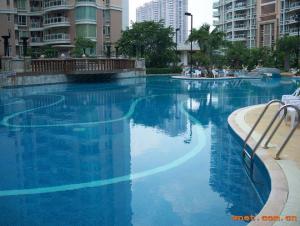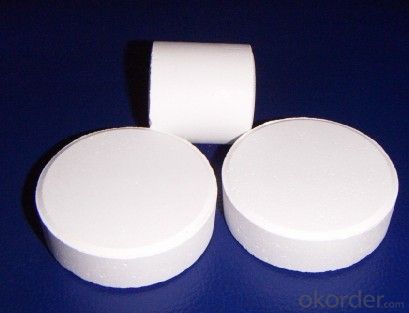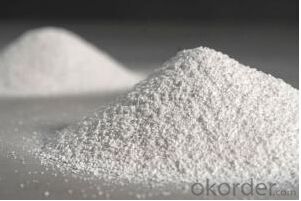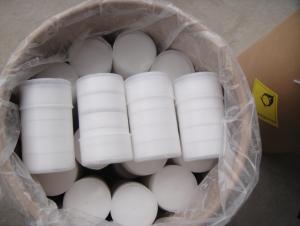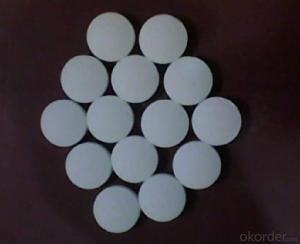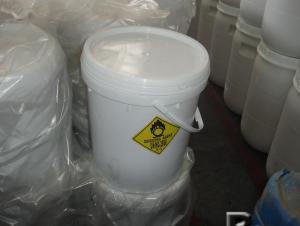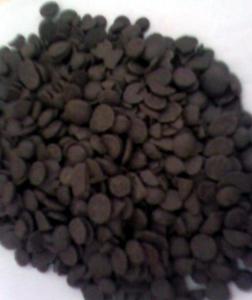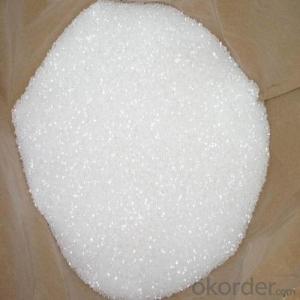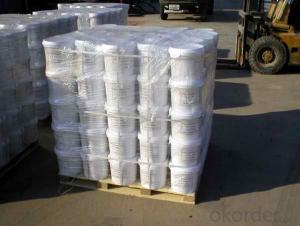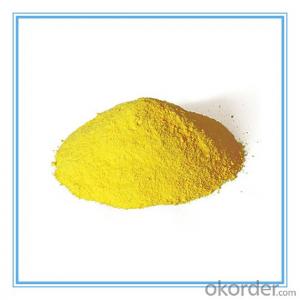TCCA Chlorine Tablet for Swimming Pool Field
- Loading Port:
- Tianjin
- Payment Terms:
- TT OR LC
- Min Order Qty:
- 22 m.t
- Supply Capability:
- 1800 m.t/month
OKorder Service Pledge
OKorder Financial Service
You Might Also Like
TCCA 90% Powder, Granular, Tablets
Introduction:
CNBM –TCCA White tablet with irritant chlorine odor. Slight solute in water. TCCA is the organic compound with the formula (C3Cl3N3O3). It is used as an industrial disinfectant, bleaching agent and a reagent in organic synthesis. This white crystalline powder, which has a strong "chlorine odour," is sometimes sold in tablet or granule form for domestic and industrial.
Specification:
Chemical Name | Trichloroisocyanuric Acid |
Molecular Formula | CONCL3 |
CAS Number | 87-90-1 |
Avaliable Chlorine %min | 90.00 |
Moisture content %,wt,Max | 0.30 |
PH Value (1% solution) | 2.7~3.3 |
Solubility 25℃ Water | 1.2g/100g |
Solubility 30℃ Acetone | 36g/100g |
Specific Gravity | 0.95(light)/1.20 |
Granular Particles Size
Mesh | 5~8 | 8~30 | 20~40 | 20~60 |
Tablets Forms
Weight | 200 gram | 150gram | 100gram | 50gram | 30gram | 20gram | 15gram | 10gram |
Diameter(mm) | 76 | 70 | 50 | 42 | 30 | 30 | 30 | 30 |
Height(mm) | 25 | 21 | 26 | 27 | 22 | 16 | 12 | 8 |
Multi-Functions
We made multifunctional tablets according to customers’ needs. For Instance, we press TCCA 90% granular with chemicals such as Boric Acid,. Sulfate Copper, Sulfate Aluminum And PAC.
Packing:
Granular& Powder:
50KG PLASTIC DRUMS/ FIBER DRUMS.
25KG PLASTIC DRUMS/FIBER DRUMS.
1000KG BIG BAGS.
Or any other packages suggest by customers.
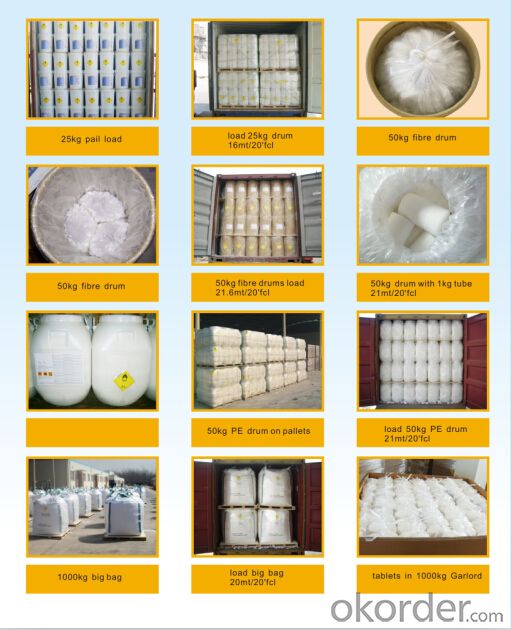

Tablets:
Inner Packing:
Individually Wrapped for 200gram,150gram, 100gram
1kg Plastic tube for 200gram
1kg plastic bottle & 5kg plastic bottle for smaller tablets
FOQ:
1, Manufacturer or Trade?
We are Manufacturer.
2, What's the delivery time?
workingdays after we received your pay or LC original.
3,Could We visit your factory?
Yes. welcome.
- Q: Why the amount of catalyst is too small will make the chemical reaction rate slowed down
- The catalyst changes the reaction rate by changing the reaction pathway and reducing the activation energy of the reaction.
- Q: What is the superiority of the catalyst compared to the stoichiometric reagent?
- Some enzymes are related to cofactors, and because of the fact that most enzymes are proteins, they are destroyed by high temperatures, strong acids and strong bases.
- Q: High school chemistry, catalyst activation energy map
- Catalytic reaction is the reaction of the first reaction with the catalyst or attached to the catalyst to form intermediates, and then further reaction to produce products and catalysts, so the amount of catalyst in theory is the same! The activation of these two processes can be reduced! So there will be two peaks! Can be simplified as a peak!
- Q: Have you Read it ? If SoCan You Think Of Any Good Group Discussion Questions ?
- Discussion and Essay Questions What is a catalyst? Who are the catalysts in this book? Why? What is Kate running from? How did she get lost (literally and figuratively)? Why does Kate hate English class? What are some of the myths surrounding the college application process? About high school? About kids like Kate? Kids like Teri? Find the list of vocabulary words given out for homework in Kate's English class. The author deliberately chose them. What is their significance? Why do authors do things like that? Does this make you hate authors? (joke... just wanted to see if you're paying attention) Discuss these image systems (symbols) found in the book: a. chemistry b. periodic table c. vision/sight d. movement vs. being stuck e. electricity What examples of safety awareness and danger can you find? How are they connected to each other? Make a list of all the elements and chemical terms used as chapter headings in the book. Explain how the chapters headings refer to the action with each chapter. Find the hints of Alice in Wonderland in the book. How does the story of Alice's journey reflect Kate's? Catalyst takes place in Merryweather High School, also the setting for Speak. What connections link the two books? How is food used in this book? Why don't we learn more about the life of Teri Litch (hint: examine the book's POV) How is Kate's relationship with her father? Why is it that way? Does it change over the course of the book. (Give examples for each answer.) Discuss the role of religion in this book. What does Kate believe in? Teri? Mitchell? How and why does Kate's relationship with Teri change after Mikey's death? Why are the three sections of the book labeled Solid, Liquid and Gas? Who is the most important character in this book? Why? How do the characters in Catalyst deal with defeat?
- Q: Does a catalyst work for both reactants and products?From my understanding, organic catalyst or enzyme does not necessarily work for the product of the reaction because of the shape of the activation site. However I cannot speak for inorganic ones.
- Generally, catalysts participate and facilitate a reaction, but the catalyst is returned unchanged. For example, sulfuric acid may be used in a Fischer esterification, palladium in a Heck reaction, pyridine in an acylation reaction, hydroxide in an aldol condensation, cyanide in a benzoin condensation, etc. An enzyme can facilitate a reaction is a similar manner, by being an acid or base catalyst for example. We could say that generally, reactions are reversible. Practically, that is not true as the energy differences of the reactants and products may be so different to prevent the reverse, an explosion for example. If a reaction is reversible, that may not mean the reverse reaction will take place. Le Chatelier's Principle can apply to determine the products.
- Q: Name one case in which catalyst poisoning is useful?
- Usually, catalyst poisoning is undesirable as it leads to a loss of usefulness of expensive noble metals or their complexes. However, poisoning of catalysts can be used to improve selectivities of reactions. In the classical Rosenmund reduction of acyl chlorides to aldehydes, the palladium catalyst (over barium sulfate or calcium carbonate) is poisoned by the addition of sulfur or quinoline. This system reduces triple bonds faster than double bonds allowing for an especially selective reduction. Lindlar's catalyst is another example — palladium poisoned with lead salts. As described by its inventor,[1][2] the catalyst is prepared by reduction of palladium chloride in a slurry of calcium carbonate followed by adding lead acetate. By this approach, one obtains a catalyst with a large surface area. Further deactivation of the catalyst with quinoline enhances its selectivity, preventing formation of alkanes. An example of alkyne reduction is the reduction of phenylacetylene to styrene.[1] en.wikipedia.org/wiki/Lindlar%27s...
- Q: Will the chemical catalyst not reduce that?
- Why is it done? Although the catalyst does not react chemically, the catalyst itself is deteriorated and is not always used
- Q: What kind of chemical substances can seriously damage the ozone layer, as a catalyst or reactants can be?
- Hundreds of years ago the news once the industrial production and emissions of ozone generated less way, the ozone layer will still be thin.
- Q: Does the nature and quality of the catalyst itself change before and after the chemical reaction?
- No, but in some cases it may produce catalyst poisoning
- Q: Now, i am studying for my biology exam in 3 weeks time...i stumbled upon catalase, and then checked my book its catalyst...now im confused...is there a different among these 2 terms? i think..catalyst is the when a substance brings up or about a chemical reaction without using itself up and then catalase breaks down the toxic by-product of metabolism, hydrogen peroxide, into water and oxygen.Or am i wrong?please explain what is catalyst and catalase in biology or are they the same, just differently?
- A catalyst is a chemical which speeds up a reaction but without being used up in the reaction, so can be used over again. Catalase is an example of an enzyme which are biological catalysts ie speed up reactions in cells. Enzymes are specific and the enzyme catalase breaks down hydrogen peroxide to water and oxygen. A catalyst which also breaks down hydrogen peroxide is manganese dioxide.
Send your message to us
TCCA Chlorine Tablet for Swimming Pool Field
- Loading Port:
- Tianjin
- Payment Terms:
- TT OR LC
- Min Order Qty:
- 22 m.t
- Supply Capability:
- 1800 m.t/month
OKorder Service Pledge
OKorder Financial Service
Similar products
Hot products
Hot Searches
Related keywords
